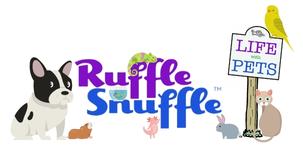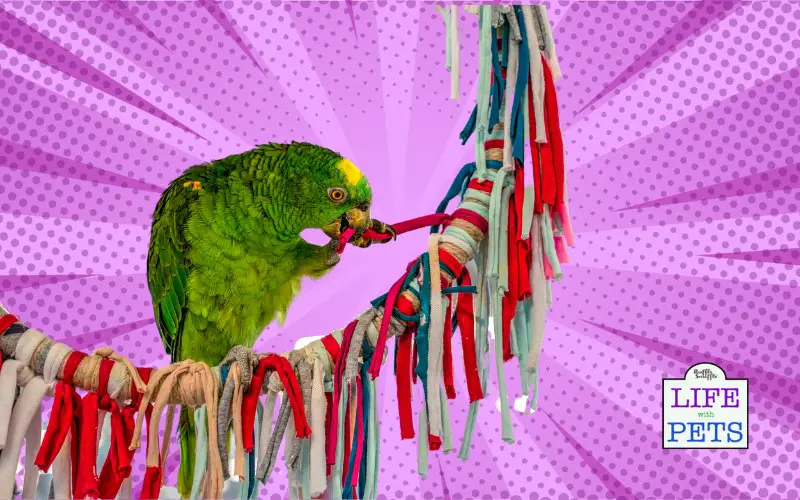Creating a Stimulating Environment for Your Pet Parrot
If your parrot has suddenly started to act weird, there’s a chance he’s just bored. Boredom-inducing actions in parrots include biting, yelling, and feather plucking that they would not typically exhibit. When bored, parrots can also become very destructive to their surroundings.
The main reason for boredom is the lack of outlets to express the bird’s natural instincts. Like other birds, your parrot has natural instincts that he should be able to act upon. For instance, parrots naturally love to munch on things like wood, bark, leaves, etc. And thanks to these instincts, they learn how to construct nests, use tools, and make hollows in trees. Chewing also makes them better at foraging for food and helps maintain the strength and health of the bones, muscles, and tendons.
Keeping your parrot as a pet in captivity prevents him from carrying out the activities he would conduct in the wild. That is where parrot toy supplies come in. They provide the physical materials required for natural play activities. By playing with toys, your pet can express his innate tendencies to chew, fling objects about, dig, and search. Being busy and able to create will keep your parrot happy and healthy.
Did you know that parrots need a lot of movement to keep fit, and playing with toys as a form of exercise helps burn calories.
Types of Parrot Toys
Nowadays, you can find a variety of parrot toy supplies available on the market. To meet his physical and psychological requirements, you should provide toys for parrots from each of the following categories.
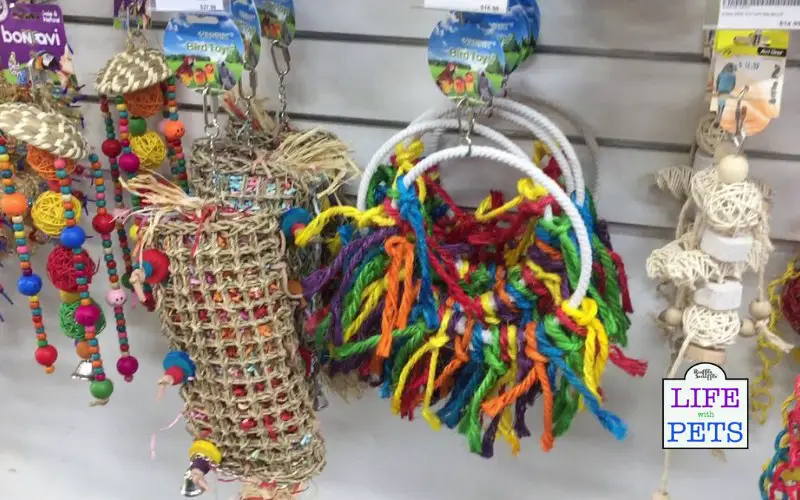
For Foraging
With the help of these playthings, your pet bird will forage for food, just like he would in the wild. Objects that can have food concealed, impaled, or embedded in them are known as foraging toys. These items should be placed all throughout the cage at various heights to encourage movement and exploration.
For Chewing
You should give your bird the opportunity to chew because it is something he naturally enjoys doing. Chewing is a common action in the outdoors, particularly during the breeding season when birds are busy digging nests into tree trunks.
Items made of wood that may be damaged are necessary for birds. Wood and leather items provide hours of pleasurable chewing. If your parrot finally destroys the objects, don’t be alarmed or upset; remember that that was the whole point.
Larger birds should be given harder wood to chew on. On the other hand, balsa, pine, or vine-based materials are excellent for tiny birds.
For Comfort
In the wild, parrots like touching their partners and will frequently cuddle up to them on trees. Caged birds also enjoy cuddling with or crawling into soft, cosy objects, especially when they are left alone. They feel less stressed and more secure as a result of this. Snuggle Rings and Peekaboo Perch Tents are two examples of comfort toys.
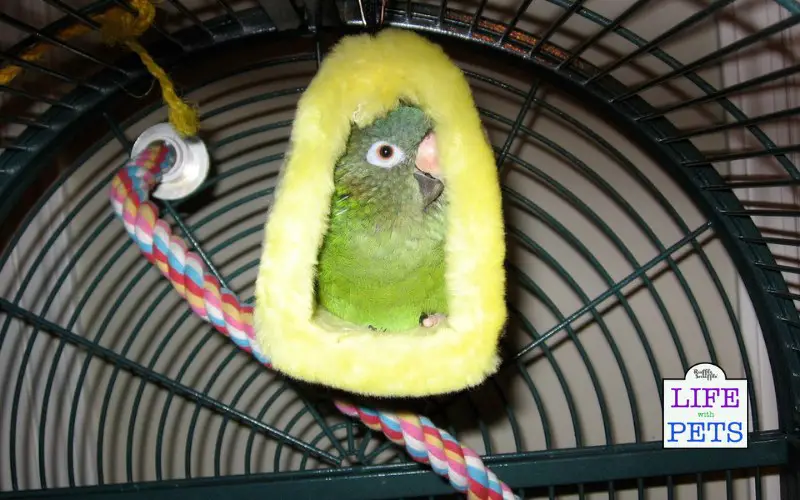
For Exercise and Preening
Swings and bungee cords are two great examples that promote mobility and provide parrots with a place to exercise.
With confined parrots, boredom and stress may frequently cause excessive preening or feather pulling. Rope preening toys provide birds with a great way to satisfy their preening urges while discouraging feather plucking and mutilation.
Manipulative/Mechanical Toys
Parrots are highly clever and inquisitive animals, so they enjoy playing with manipulative and mechanical toys. They like removing locks, loosening nuts and bolts, and dismantling cages to get away. Providing these birds with manipulative and puzzle-solving playthings will psychologically stimulate them.
Things to Consider When Choosing Toys for Your Parrot
Some items aren’t thought to be safe for pet birds. The ideal ones will keep your feathery friend safe, content, and injury-free. For that, you should do two things:
- Think carefully about the toy’s size, material, and design.
- Check the size of the toy you’re looking to buy.
- Always buy parrot toys made by reputable pet supply brands which contain only safe materials.
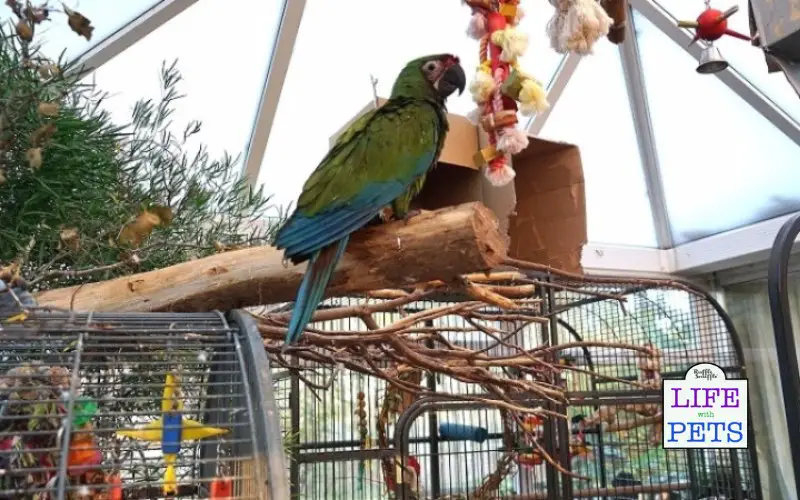
Larger birds shouldn’t be given toys designed for smaller ones since they can include tiny fragments that could pose choking hazards. Similarly, it’s not advisable to provide smaller bird toys designed for larger ones since these can include hazards like entrapment. Make sure you read the packaging carefully since most products will specify which types of birds they are best suited for.
Follow these guidelines to choose the right materials.
Wood
Pick objects made of “safe” woods like apple, dogwood, hickory, pine, bamboo, birch, balsa, dogwood, Douglas fir, and walnut. Cherry, cedar, oak, and plywood are a few examples of unsafe wood. Verify that any coloured wood was dyed using non-toxic food colouring or vegetable dyes.
Rope
Ropes are frequently used in bird playthings. Pick items made entirely of natural fibres, such as jute, hemp, cotton, or sisal. Rope playthings must be kept in good condition, and frayed ropes should be trimmed back as needed since they can endanger pet birds.
Chains
Chains must be soldered and must not have any exposed links with potential sharp edges. To avoid catching your pet’s toes, make sure the chains are not too short. Additionally, think about the chain’s length because excessively lengthy chains run the risk of encircling the bird.
Leather
Parrot toys should only be made of leather that has been vegetable tanned. Steer clear of leather that has been coloured or tanned with substances that are poisonous to birds. When leather becomes damp or dirty, it should be changed.
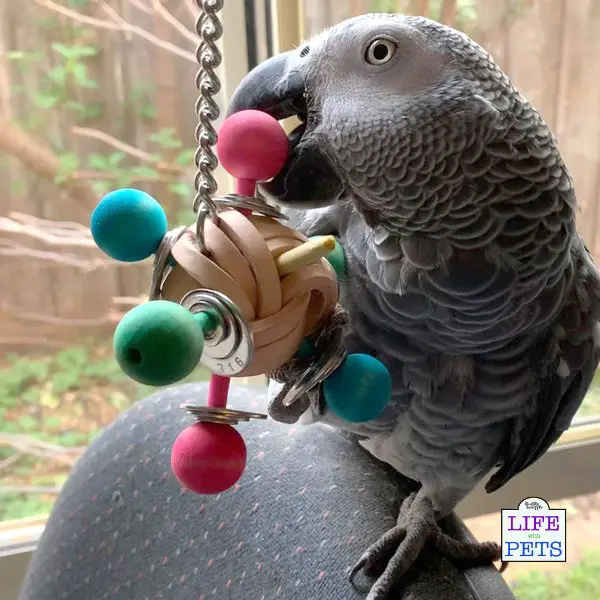
Bells
When buying playthings for birds that have bells, make sure the bell is securely fastened and that the bird cannot remove any of the components without risking choking. Avoid using bells with jingle-style bells because birds’ toes might become entangled in tight spaces.
Toy Rotation
Once a week, switch the toys in and out of the cage to prevent boredom. To make it even more interesting, shuffle the other toys. The idea is that an object can unexpectedly become alluring if put in a different setting.
You can also change up the objects in the cages and play areas. Don’t overcrowd the cages of your birds to the point that they become immobile to ensure that they have ample room to play. Rotating fewer toys more frequently is advised.
The Final Word on Fun, Safe Playtime for Your Feathered Friend
Having a pet parrot can be extremely rewarding, but it’s important to remember that they are intelligent creatures who require stimulation and enrichment. Luckily, with the right range of stimulating toys, you can ensure your feathered friend never gets bored.
Parrots love to explore, play and interact with items around them – toys designed specifically for parrots offer the ideal balance of challenge and fascination. They help keep birds engaged mentally, physically active and ultimately, delightfully content! So don’t forget to provide a wide selection of bird-friendly chew toys, interactive puzzles and swinging perches. With the right parrot toys, your pet will have plenty of fun activities to keep them entertained!
I wrote this article about parrot enrichment which also has lots of ideas for you to try, why not read it too?
.This article was originally published on www.rufflesnuffle.co.uk. If it is published on any other site then it is without the permission of the copyright owner.
This is a guest post.
